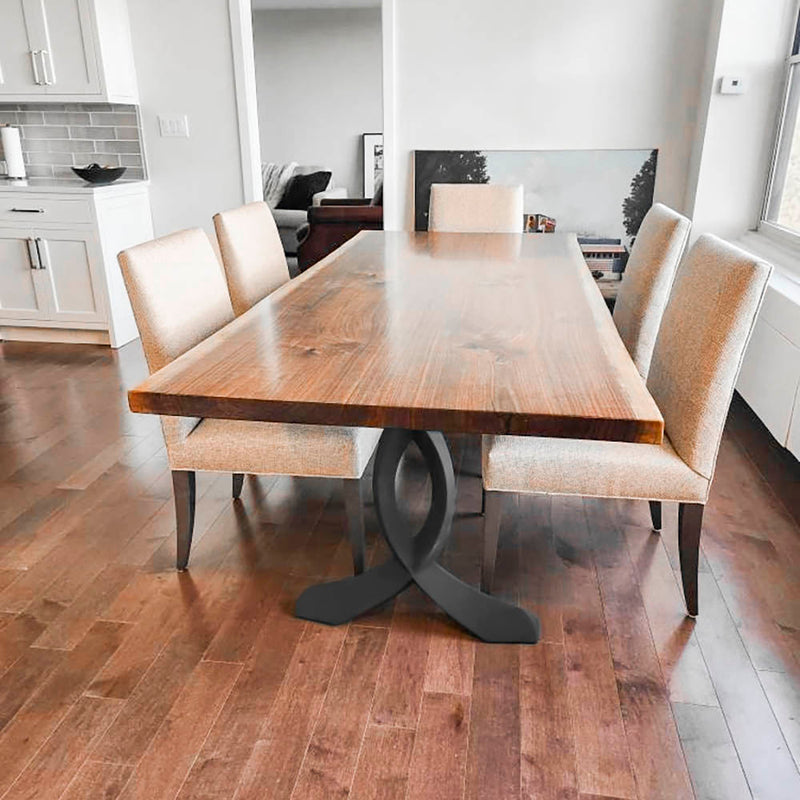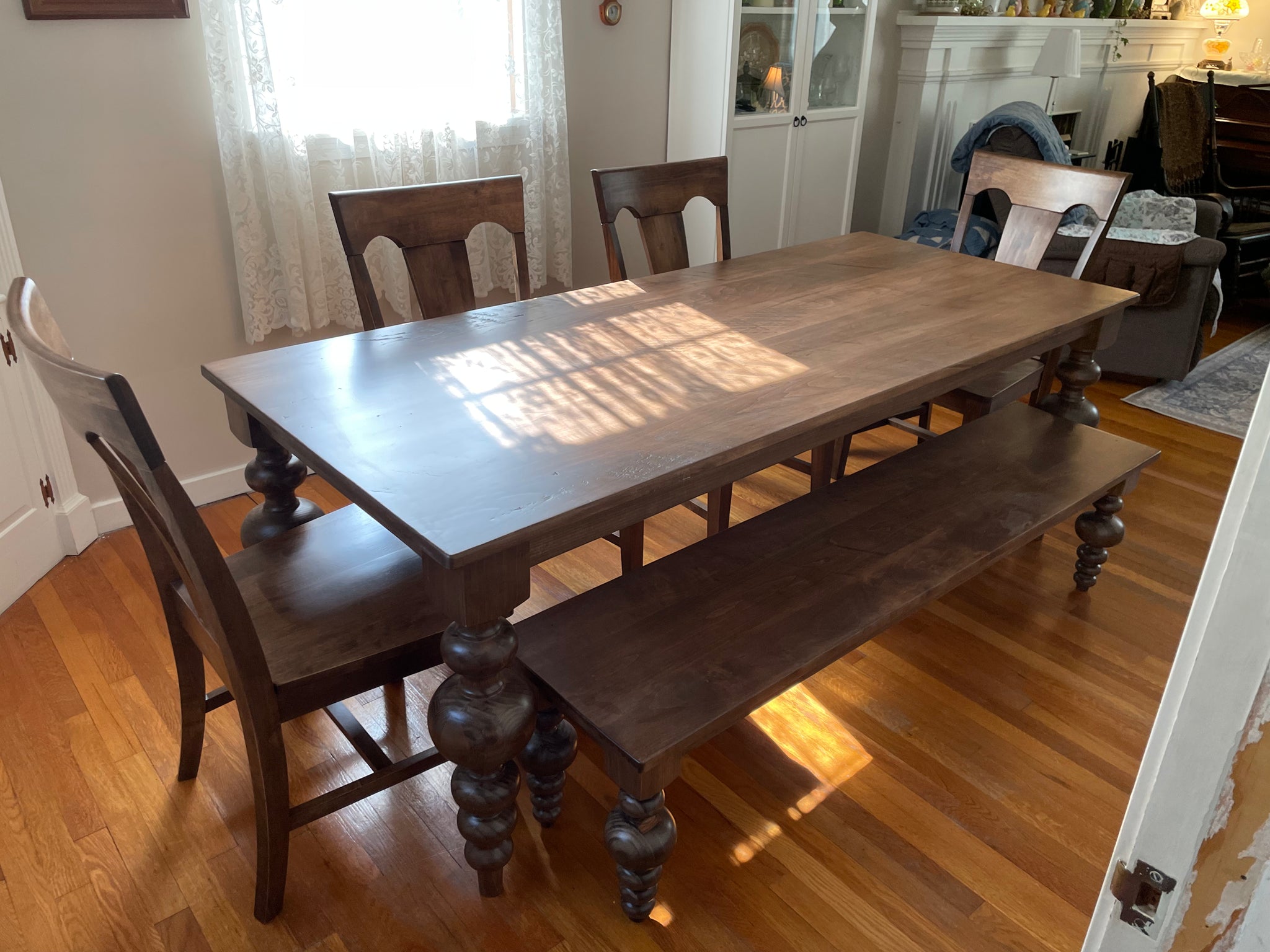How the Right Dining Room Table Legs Can Complete Your Dining Room Look
How the Right Dining Room Table Legs Can Complete Your Dining Room Look
Blog Article
From Traditional to Modern: Find the Ideal Dining-room Table Legs for Your Design
The choice of dining-room table legs plays an essential role in defining the overall personality of your space, linking the void between standard craftsmanship and contemporary aesthetic appeals. While classic layouts such as cabriole and turned legs evoke a feeling of timeless elegance, modern designs like hairpin and geometric choices provide a chance for striking visual interest. Evaluating the ideal equilibrium in between these styles calls for a nuanced understanding of your existing decoration and individual taste. As you think about these aspects, the inquiry continues to be: just how can you perfectly integrate these varied leg styles to create an unified eating experience?
Recognizing Table Leg Styles
The range of dining room table leg styles can substantially influence both the aesthetic appeals and performance of the space. Each leg style contributes one-of-a-kind functional attributes and visual elements, satisfying diverse layout choices and use requirements. Recognizing these styles is vital for choosing the ideal table that lines up with your total interior layout vision.
For example, conical legs provide a clean, timeless look that can enhance a space's elegance, while pedestal bases provide security and optimize legroom, making them excellent for smaller sized spaces. Hairpin legs, a trademark of mid-century modern layout, present an industrial flair, permitting a ventilated, open feeling. Likewise, trestle legs stimulate rustic appeal, giving robust support and a sense of timelessness.
Wooden legs can bring heat and appearance, whereas steel choices often communicate a streamlined, modern vibe. Inevitably, comprehending table leg styles is essential for creating a cohesive dining area that mirrors personal style while ensuring functionality and convenience.
Typical Table Leg Options
When selecting dining-room table legs, traditional choices frequently symbolize timeless style and workmanship. These designs mirror an abundant heritage and a commitment to top quality, making them optimal for those that value classic looks.
Among the most legendary typical leg designs is the cabriole leg, defined by its elegant curved shape. This style commonly features decorative makings and is most typically found in Queen Anne and Chippendale furnishings. An additional popular alternative is the turned leg, which boasts a series of smooth, rounded shapes that offer a timeless appearance while keeping security.
Moreover, the straight leg, while basic, supplies a basic and durable framework that can blend effortlessly with a selection of tabletop styles. For those attracted to ornate detailing, claw-and-ball feet legs stimulate a feeling of majesty and can function as a magnificent focal factor in any kind of eating area.
Finally, stand bases, although not purely legs, supply an alternate standard option that permits enough legroom and can be beautifully sculpted. Each of these conventional leg styles adds to the total ambiance of a dining room, marrying function with aesthetic allure.

Modern Table Leg Styles
Modern table leg designs offer a diverse variety of designs that emphasize innovative materials and clean lines. These styles often prioritize functionality while functioning as striking centerpieces within a dining area. Minimalist visual appeals prevail, with legs crafted from products such as metal, glass, and crafted wood, which add to a modern and ventilated feeling.
One popular layout is the barrette leg, characterized by its slender, conical framework that offers security without overwhelming the table top (dining room table legs). This design is typically discovered in mid-century contemporary furnishings and can effortlessly enhance different eating table forms. One more trend is the use of geometric shapes, where legs may tackle unbalanced or angular kinds, adding visual rate of interest and a touch of creativity

Mixing Styles for Unique Spaces
Often, home owners seek to produce distinct dining rooms that reflect their individual style by mixing numerous layout components. This strategy enables the unification of varied appearances, resulting in a Recommended Reading harmonious yet unique setting. Pairing a rustic wooden table with smooth, modern steel legs can develop a distinctive contrast that raises the space's overall charm.
In addition, integrating vintage table legs with modern tabletops can evoke a feeling of background while maintaining a modern-day perceptiveness. Such combinations not only showcase private preference yet likewise encourage creative thinking, allowing home owners to curate an area that feels both personal and inviting.
Color plays a critical role in this mixing procedure; picking table legs that enhance or contrast with the existing color design can enhance link aesthetic rate of interest. Whitewashed legs can soften the boldness of a dark table surface, creating a balanced visual.
Tips for Picking the Right Legs
Choosing the right table legs is necessary for accomplishing both functionality and visual charm in your dining space. Begin by thinking about the total style of your room. Typical settings take advantage of legs that feature elaborate makings or turned designs, while modern areas might call for streamlined, minimal designs.
Next, evaluate the elevation and security of the legs. dining room table legs. Typical eating tables vary in between 28 to 30 inches in elevation, so make certain the legs enhance this measurement for comfort. In addition, durable materials, such as wood or steel, can boost security and durability
Assess the leg go to the website shape as well-- choices consist of directly, tapered, or stand layouts. Straight legs offer a traditional appearance, while conical legs can add a touch of elegance. Pedestal bases offer ample legroom and are suitable for smaller areas.
Conclusion
In summary, picking the ideal dining space table legs needs cautious consideration of both traditional and modern-day styles. By integrating leg design, elevation, and product with the overall decor, a natural and welcoming atmosphere can be accomplished.
The selection of dining area table leg designs can substantially affect both the aesthetics and functionality of the area. Inevitably, recognizing table leg designs is essential for developing a natural eating location that reflects personal style while making certain functionality and comfort.One of the most renowned standard leg styles is the cabriole leg, characterized by its stylish rounded shape. Straight legs offer a timeless appearance, while tapered legs can add a touch of elegance.In recap, picking the optimal dining space table legs calls for mindful factor to consider of both contemporary and standard designs.
Report this page